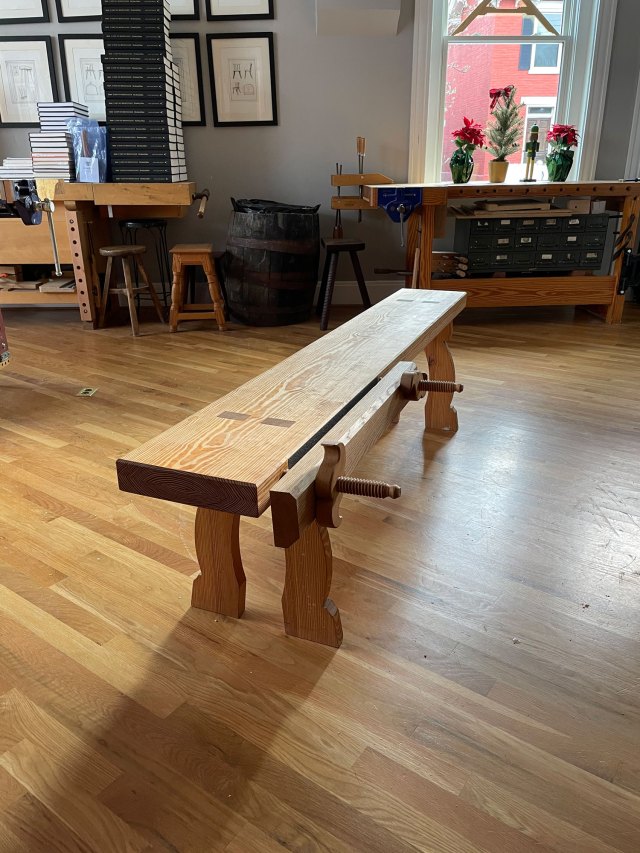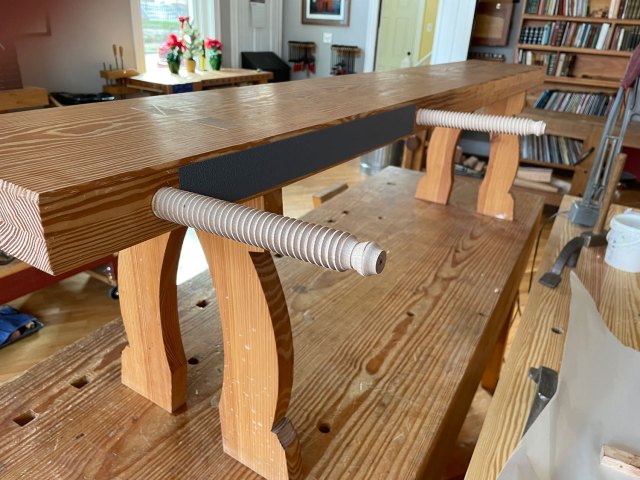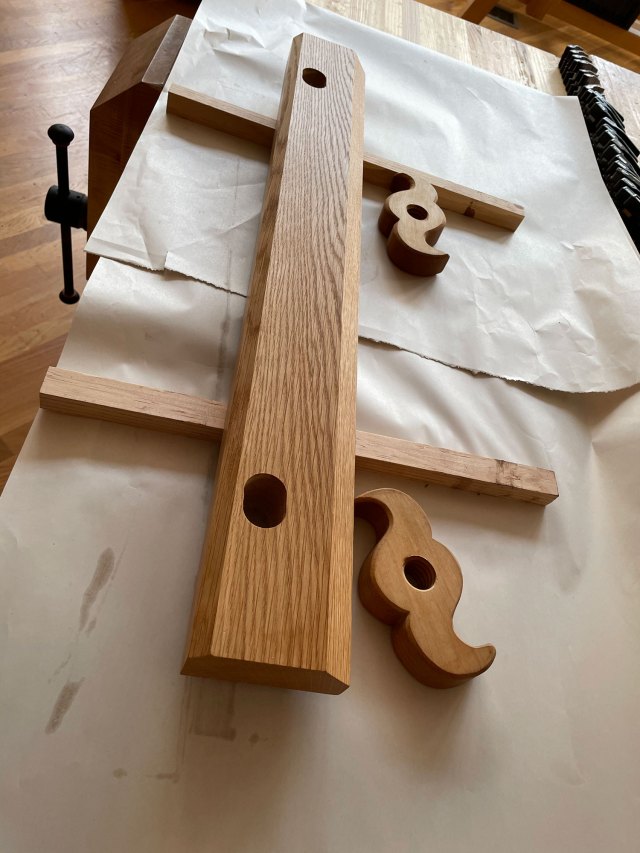
Sometime during the last two weeks I looked around the house and wondered: Do I have a low Roman workbench here somewhere? Because I need one for my demonstrations at Colonial Williamsburg’s “Working Wood in the 18th Century” conference, which runs from Jan. 14-17, 2021.
Here’s the problem: I gave my low, eight-legged workbench (based on a fresco at Herculaneum) to Brendan Gaffney. That bench is (I think) somewhere in New York state. Then I loaned the low bench I built that’s based on the world’s earliest extant workbench at Saalburg, Germany, to Dan Raber at the Artisans Guild in Millersburg, Ohio.
Then, while dishing out our family supper on my Loffelholz workbench in our dining room (which is too high for the Colonial Williamsburg demonstrations) I barked my shins against something. A Swedish sitting bench I’d built in 2010 for Popular Woodworking Magazine. The bench is from the Älvros Farmstead, a group of buildings from the 16th and 17th centuries that were moved to Skansen, Sweden, which is a living history museum.
The Skansen bench’s top is 11” wide, more than 2-1/2” thick and 72” long. The bench’s seat is about 19” off the floor.
Hmm. I guess I do have a Roman workbench here.

Today I started to add workholding to the bench. First up: A twin-screw vise based on 14th-century French benches. I made a couple screws from maple and threaded them with my 28mm threadbox from Dieter Schmid. The tool works brilliantly, is expensive and never gets loaned out. The threads are about 7” long, and have a 1”-diameter x 5”-long tenon on the other end.

I drilled a couple quick holes on 22” centers in the side of the Skansen bench to receive the tenons. This spacing allows me to hold and shape a chair seat. The vise chop is made from 2” x 4” x 30” red oak. The chamfers reduce the weight of the chop without reducing its grip (thanks vector forces). The vise nuts are maple.
To make the vise grip better, I looked around for coarse leather to glue to the bench and the chop. I am presently bovine-free. So I took a tip from the late Jennie Alexander and lined the vise with Safety Walk anti-slip tape. You can buy it at any good hardware store. It’s designed to stick on ladders and such to improve your footing. I use it on handscrews and the like. It’s not period-correct (the French used sturgeon swimbladders to line their vise jaws, JK), but I just forgave myself for the lapse.
All the parts are finished with linseed oil and beeswax.
Tomorrow I’ll add an adjustable planing stop, a “palm” and a chairmaker’s shaving stop.
Finally, I’ll chain this Roman workbench to a heavy object in the library so it doesn’t escape.
— Christopher Schwarz
If you are wondering what the hell I’m talking about in this post with low workbenches and “palms” and swimbladders, you haven’t read my book “Ingenious Mechanicks.” It’s all about early ways to work wood without a complex bench.